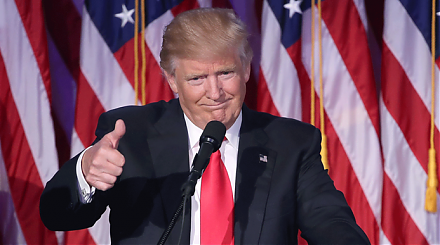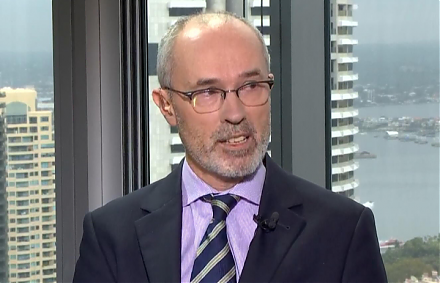

2023-04-28 16:38:00 Fri ET
stock market competition macrofinance stock return s&p 500 financial crisis financial deregulation bank oligarchy systemic risk asset market stabilization asset price fluctuations regulation capital financial stability dodd-frank
Peter Schuck (2015)
Yale law and political economy professor Peter Schuck analyzes a comprehensive list of U.S. government failures. Schuck points to both structural problems such as cultures and institutions as well as economic incentives. Schuck further relies upon the theory of non-market government failures by former Hoover-Stanford research fellow Charles Wolf. In accordance with this theory, internalities replace the market failures due to externalities. Internalities often serve as clear evidence of a discord between the public goals of a particular policy program and the private interests of its administrators. Schuck delves into why public discourse has become even more critical in recent decades. His important book contribution reminds us of the use of expert judgment, in addition to the essential need for public discourse at each step along the historical trajectory of public policy formulation and implementation.
Schuck evaluates public policy success in terms of whether the benefits of a policy program exceed its costs in an efficient and cost-effective manner. As a melioristic realist, Schuck draws pragmatic conclusions from broad and careful observations of policy outcomes. A core theme of the Schuck thesis is that whatever reform one might propose can become hostage to the same problems that plague the original policy. In this light, Schuck favors incrementalism (or macroeconomic reform at the margin) in stark contrast to comprehensive overhaul and reconstruction.
In his deep and broad review of U.S. government policies, Schuck limits the central treatment to domestic national policies. Schuck applies cost-benefit calculus to the extent of compensation for economic harms. In particular, Schuck divides the main reasons for U.S. government failures into structural causes (such as cultures and institutions) and economic incentives. Schuck indicates that most U.S. government failures are structural as they grow out of the policy entrenchment process, political culture, human irrationality, misinformation, bureaucracy, market dynamism, and law enforcement etc.
American democracy often depends on many subject matter experts with high-skill domain knowledge and asset-specific information. However, information gaps and irregularities often persist over time. Schuck examines the long prevalent American historical engagement with localism and individual choice, the obsession with basic human rights, and political discourse. Fundamental market forces and factors often confound and compete with public policy decisions by central banks, treasuries, or bank supervisors and regulators. In the broader business context, inertia persists because people who face private interests of the current system have no incentive to improve the system in the new normal steady state. Congress is often well aware of its poor reputation with the general public, for instance, but few U.S. legislators show an active interest in starting full economic reforms from scratch.
Many economists often concentrate their laser-like focus on incentives for cautious incremental reforms. These incremental reforms improve the current system at the margin. Moral hazard attracts public attention, especially in the Schuck analysis of the roles of Fannie Mae and Freddie Mac in the subprime mortgage meltdown. In the case of Dodd-Frank Act financial system reforms, many policymakers seem to have learned the subpar negative lesson from the financial fiasco. An inadvertent consequence is that implicit government guarantees tend to increase moral hazard by broadening the financial safety net for Wall Street. Schuck maintains that these financial system policies and regulations would probably perform quite well instead to attenuate moral hazard in the first place. For several emergency liquidity support programs (subject to moral hazard), Schuck advocates that the major beneficiaries should have enough skin in the game to act responsibly for sharing costs and risks. Cost-effective measures help facilitate better information flows to the low-income segments of the general public (e.g. small-to-medium enterprises, first-time home buyers, and college-ready students etc).
Another glimmer of hope is quite evident in the rare unique Schuck analysis of the theory of non-market failures by the former Hoover-Stanford senior research fellow Charles Wolf (1979). The most important category of non-market failures refers to internalities in stark contrast to externalities that many economists analyze in most private markets. Internalities often tend to pertain to the private goals that apply to non-market organizations in inter-agency performance evaluation of key personnel. In addition to the inter-agency public purposes, these private goals provide the key motivation behind both individual and collective actions and behaviors. From time to time, several government policies fail because these policies cannot better align the private goals of policy administrators with the collective public goals of the wide inter-agency collaboration. For instance, the U.S. Treasury often collaborates with the Federal Reserve System to carry out annual macroprudential stress tests and on-site bank examinations to ensure mega bank compliance with specific technical rules and regulations. These technical rules and regulations often relate to internal risk model reconfigurations, macrofinancial stress test scenario specifications, and bank capital shortfall requirements etc. In combination, large bank compliance with these rules and regulations can contribute to macrofinancial stabilization. The devil is often in the details. Private goals and interests sometimes cannot motivate these bank examiners to serve as effective financial system gatekeepers in accordance with the public goals of sound and efficient asset market stabilization.
If some government policy helps address public goals at the expense of the private hopes and desires of the collective groups of subject matter experts, the resultant policy failure may become predictable altogether. Those private hopes and desires conflict with the government policy such that the collective groups of subject matter experts inevitably undermine the public policy goals. Private economic actors and agents may actively work together to prevent the implementation of public policies because many people want to avoid the negative ripple effects and repercussions as a result of both policy implementation and enforcement. In this case, the central specification of public policy goals mismatches with private goals and interests. In this unique fashion, non-market failures occur because most policymakers cannot internalize the unfortunate shortfall between both private interests and public policy goals in the broader business context.
Nobel Laureate George Stigler presents his economic theory of regulation that key interest groups tend to use their regulatory and coercive powers of government to shape both laws and regulations in a fundamental way that benefits these interest groups. If economists misspecify key group goals, or alternatively posit group goals that often tend to override individual goals, then government failures can arise from this misspecification in the political economy process. These policy failures might well be independent of the U.S. Constitution, democracy, and any of the American cultural facts that some people cite as partial explanations for government failures. Outside most U.S. states, international evidence from Britain and Canada to China and India further bolsters the Stigler economic theory of regulation. In essence, the Stigler economic theory of regulation seems to have passed the tough test of time. It is quite logical and reasonable for economists to connect the dots between public policies and private constituent interests.
Atif Mian, Amir Sufi, and Francesco Trebbi (AER 2010) empirically delve into the effects of constituents, special interests, and ideologies etc on U.S. congressional legislation in U.S. economic history. Senators and congressional legislators whose constituents experience a significant increase in mortgage default occurrence are more likely to support the Foreclosure Prevention Act (especially in key competitive districts). These senators and congressional legislators are much more responsive to mortgage defaults of their own-party constituents. In the form of higher political campaign contributions from the financial industry, special interests often increase the likelihood of constituents supporting the Emergency Economic Stabilization Act soon after the Global Recession 2008-2009. Ideologically conservative members of American legislature are substantially less responsive to these special interests. On balance, the political economy of American mortgage defaults therefore lends credence to both the classic Stigler economic theory of regulation, as well as the Wolf theory of non-market government failures (the latter of which Schuck seems to emphasize in his core thesis). When push comes to shove, the law of inadvertent consequences counsels caution.
In most economic textbooks, the production possibility set depicts what is feasible for a modern capitalist economy in terms of public goals of plenty and power. When the economy rests on the frontier of the production possibility set, the government exhausts all of the available economic resources in the hot pursuit of public policy goals. In this case, there is none left for government expenditures on private goals, interests, and internalities (the latter of which both Schuck and Wolf emphasize in the theory of non-market government failures). Schuck seems correct to focus on the structural endemic features of the American federal bureaucracy. Sometimes there are 55 layers of policymakers with a vacuum of top leadership in most federal agencies. In practice, Schuck and Wolf cite U.S. federal agency budget growth as a major concern. In addition to this agency growth, managerial rent protection often arises as a result of both private pursuits and several other detrimental behaviors. Economic rent protection instead can be the result of public approval of the mission and successful delivery of public service. For instance, U.S. federal agencies often attempt to use public health procedures to better regulate vaccine and medication sales, especially during the global pandemic corona virus crisis of 2020-2021. This attempt provides an illustrative case in point. In practice, the private goals of public health experts often differ dramatically from the best interests of most citizens who cast votes in U.S. congressional elections. In this case, the median voter theorem suggests that the mass propensity of voters wins regardless of the private interests and goals of rent-seekers in federal agencies. Whether it is essential to draw a fine distinction between private interests and public goals remains open to controversy.
Schuck shines fresh light on the important role of the major credit rating agencies such as S&P and Fitch etc in the Global Financial Crisis 2008-2009. This episode is a critical one for many financial economists. Most current credit rating agencies tend to bias their credit assessments upward. The principle is quite simple: no one complains about credit upgrades. Many university professors, who grade student work and occasionally referee journal articles, are quite familiar with the incentives. As one of the U.S. financial regulators, the FDIC prefers to focus on the median of the multiple assessments from the core credit rating agencies. The baseline central tendency helps address the inherent bias in corporate credit assessments. In fact, this credit bias problem recurs from time to time such that both the Federal Reserve System and Treasury mega bank examiners often put precautions in place against the predictable upward bias. The precautions tend to reflect the pervasive reliance on the worst-case scenarios such as the Great Depression of the 1930s, the stock market crash in 1987, the Great Recession of 2008-2009, and the global pandemic corona virus crisis of 2020-2021. In effect, these precautions help ease the recent sharp increase in the broader fragility of the U.S. financial system.
Schuck further expresses deep skepticism about the major role of the courts in any reform program because judges are not subject matter experts. In this light, judges often lack pivotal information about technical matters. This deep skepticism stands in contrast with the long prevalent optimism from Judge Richard Posner and many colleagues about the efficacy of a naïve jury that receives professional advice from bilateral expert witnesses in determining monetary damages for most civil matters. In the standard Posner example, the bilateral expert witnesses share both biases and prejudices for their clients, but everyone is well aware of these ex ante biases. The rule of discovery combines with cross-examination to create key transparency and hence more intense scrutiny. As a consequence, the advisory opinions of most expert witnesses are sufficiently reliable, and the jury can simply split the difference in their estimates of monetary damages in most civil cases. In the specific case of expert witnesses, the coincident combination of competition, expert bias correction, and procedural evidence often suffices to yield trustworthy results.
However, Schuck agrees to disagree with this coincident combination. Indeed, this combination prevails either in the U.S. court system, or outside the pragmatic world of both policy formulation and implementation. One additional insight for economic reform helps make disputes about policy proposals subject to the political economy process. Transparent disclosure rules and regulations can induce the constituents and special interest groups to better assess most civil cases on the basis of richer information sets and incentives.
Schuck cites the recent research Expert Political Judgment by Philip Tetlock (2005) on the alternative styles of economic reforms. The metaphoric comparison of foxes versus hedgehogs helps inform expert judgment in incremental economic reforms. Foxes know many tricks that rarely work in combination or in reality. By comparison, hedgehogs know one big trick that always works in practice. As Tetlock suggests, the problem with hedgehogs is that they cannot be equally open to disconfirmatory evidence. From time to time hedgehogs bear a strong family resemblance to higher scorers on personality scales that key psychologists design to gauge the essential needs for closure and structure. In experimental research, the hedgehogs refer to the types of people who often choose to bias against disconfirmatory evidence that undercuts their preconceptions. With self-attribution bias, the hedgehogs are more likely to embrace positive evidence that reinforces their preconceptions. In practice, several subject matter experts and specialists share this self-attribution bias. Even though the incumbent politicians can dilute this bias by adding generalists to U.S. federal bureaucracy, this deliberate dilution inevitably runs the risk of racing to the bottom in light of mediocre reforms. In the political economy process, the deliberate inclusion of foxes may inadvertently cause groupthink and its subpar results. Many economists are practical subject matter experts, specialists, and hedgehogs in the common metaphoric terms of both Philip Tetlock and Peter Schuck. Just as expert witnesses play an important role in civil litigation, the incumbent politicians should motivate most economists to compete with each other across the political spectrum. Competition breeds efficiency. With bilateral expert judgment, the resultant political discourse can help promote a vigorous race to the top in most public policy debates. Overall, the metaphoric comparison of foxes versus hedgehogs shines fresh light on incremental economic reforms.
The classic thesis of Adam Smith and his followers James Mill and John Stuart Mill suggests that public discourse can attenuate the agency problem by better aligning the economic rent incentives of both politicians and public policy decision-makers to the private goals and interests of constituents, voters, or special interest groups in the political economy system. Peter Schuck demonstrates why the current issue is even more important in our modern global society. Schuck further warns against following expert judgment with specific biases and preconceptions. In the delicate balance between public policy goals and economic incentives, political discourse helps inform the optimal trajectory of both incremental public policy formulation and implementation.
This analytic essay cannot constitute any form of financial advice, analyst opinion, recommendation, or endorsement. We refrain from engaging in financial advisory services, and we seek to offer our analytic insights into the latest economic trends, stock market topics, investment memes, personal finance tools, and other self-help inspirations. Our proprietary alpha investment algorithmic system helps enrich our AYA fintech network platform as a new social community for stock market investors: https://ayafintech.network.
We share and circulate these informative posts and essays with hyperlinks through our blogs, podcasts, emails, social media channels, and patent specifications. Our goal is to help promote better financial literacy, inclusion, and freedom of the global general public. While we make a conscious effort to optimize our global reach, this optimization retains our current focus on the American stock market.
This free ebook, AYA Analytica, shares new economic insights, investment memes, and stock portfolio strategies through both blog posts and patent specifications on our AYA fintech network platform. AYA fintech network platform is every investor's social toolkit for profitable investment management. We can help empower stock market investors through technology, education, and social integration.
We hope you enjoy the substantive content of this essay! AYA!
Andy Yeh
Chief Financial Architect (CFA) and Financial Risk Manager (FRM)
Brass Ring International Density Enterprise (BRIDE) ©
Do you find it difficult to beat the long-term average 11% stock market return?
It took us 20+ years to design a new profitable algorithmic asset investment model and its attendant proprietary software technology with fintech patent protection in 2+ years. AYA fintech network platform serves as everyone's first aid for his or her personal stock investment portfolio. Our proprietary software technology allows each investor to leverage fintech intelligence and information without exorbitant time commitment. Our dynamic conditional alpha analysis boosts the typical win rate from 70% to 90%+.
Our new alpha model empowers members to be a wiser stock market investor with profitable alpha signals! The proprietary quantitative analysis applies the collective wisdom of Warren Buffett, George Soros, Carl Icahn, Mark Cuban, Tony Robbins, and Nobel Laureates in finance such as Robert Engle, Eugene Fama, Lars Hansen, Robert Lucas, Robert Merton, Edward Prescott, Thomas Sargent, William Sharpe, Robert Shiller, and Christopher Sims.
Follow AYA Analytica financial health memo (FHM) podcast channel on YouTube: https://www.youtube.com/channel/UCvntmnacYyCmVyQ-c_qjyyQ
Follow our Brass Ring Facebook to learn more about the latest financial news and fantastic stock investment ideas: http://www.facebook.com/brassring2013.
Free signup for stock signals: https://ayafintech.network
Mission on profitable signals: https://ayafintech.network/mission.php
Model technical descriptions: https://ayafintech.network/model.php
Blog on stock alpha signals: https://ayafintech.network/blog.php
Freemium base pricing plans: https://ayafintech.network/freemium.php
Signup for periodic updates: https://ayafintech.network/signup.php
Login for freemium benefits: https://ayafintech.network/login.php
If any of our AYA Analytica financial health memos (FHM), blog posts, ebooks, newsletters, and notifications etc, or any other form of online content curation, involves potential copyright concerns, please feel free to contact us at service@ayafintech.network so that we can remove relevant content in response to any such request within a reasonable time frame.
2017-01-03 03:26:00 Tuesday ET

President-Elect Donald Trump wants Apple and its tech peers to consider better and greater high-tech job creation in America. Apple has asked its primary
2019-06-09 11:29:00 Sunday ET

St Louis Federal Reserve President James Bullard indicates that his ideal baseline scenario remains a mutually beneficial China-U.S. trade deal. Bullard ind
2017-06-09 06:37:00 Friday ET

To complement President Trump's pro-business economic policies such as low taxation, new infrastructure, greater job creation, and technological in
2022-03-15 10:32:00 Tuesday ET

Capital structure theory and practice The genesis of modern capital structure theory traces back to the seminal work of Modigliani and Miller (1958
2026-04-30 08:28:00 Thursday ET

In the current global market for better biotech advances, medical innovations, and healthcare services, the new integration of artificial intelligence (AI)
2019-08-05 13:30:00 Monday ET

China continues to sell U.S. Treasury bonds amid Sino-U.S. trade truce uncertainty. In mid-2019, China reduces its U.S. Treasury bond positions by $20.5 bil